Alkali-Activated Mortars Modified by Epoxy-Carbon Fiber Composites Wastes
Abstract
:Featured Application
Abstract
1. Introduction
2. Materials and Methods
2.1. Composites Waste Scraps
2.2. Activators
2.3. Binders
2.4. Aggregate
2.5. Mixing Procedures and Compositions
2.6. Tests
2.6.1. Water Absorption
2.6.2. Mechanical Characterization
2.6.3. Pull-Out Test
3. Results
4. Discussion
5. Conclusions
Author Contributions
Funding
Institutional Review Board Statement
Informed Consent Statement
Conflicts of Interest
References
- Zhang, J.; Chevali, V.S.; Wang, H.; Wang, C.-H. Current status of carbon fibre and carbon fibre composites recycling. Compos. Part B Eng. 2020, 193, 108053. [Google Scholar] [CrossRef]
- Pakdel, E.; Kashi, S.; Varley, R.; Wang, X. Recent progress in recycling carbon fibre reinforced composites and dry carbon fibre wastes. Resour. Conserv. Recycl. 2020, 166, 105340. [Google Scholar] [CrossRef]
- Lopez-Urionabarrenechea, A.; Gastelu, N.; Acha, E.; Caballero, B.; Orue, A.; Jiménez-Suárez, A.; Prolongo, S.; de Marco, I. Reclamation of carbon fibers and added-value gases in a pyrolysis-based composites recycling process. J. Clean. Prod. 2020, 273, 123173. [Google Scholar] [CrossRef]
- Limburg, M.; Stockschläder, J.; Quicker, P. Thermal treatment of carbon fibre reinforced polymers (Part 1: Recycling). Waste Manag. Res. 2019, 37, 73–82. [Google Scholar] [CrossRef] [PubMed] [Green Version]
- Zhao, Q.; Jiang, J.; Li, C.; Li, Y. Efficient recycling of carbon fibers from amine-cured CFRP composites under facile condition. Polym. Degrad. Stab. 2020, 179, 109268. [Google Scholar] [CrossRef]
- Kim, Y.-O.; Kim, S.Y.; Park, M.; Yang, B.; Kim, J.; Jung, Y.C. Application of supercritical water for green recycling of epoxy-based carbon fiber reinforced plastic. Compos. Sci. Technol. 2019, 173, 66–72. [Google Scholar] [CrossRef]
- Coppola, L.; Bellezze, T.; Belli, A.; Bignozzi, M.C.; Bolzoni, F.M.; Brenna, A.; Cabrini, M.; Candamano, S.; Cappai, M.; Caputo, D.; et al. Binders alternative to Portland cement and waste management for sustainable construction—Part 1. J. Appl. Biomater. Funct. Mater. 2018, 16, 186–202. [Google Scholar] [CrossRef] [PubMed] [Green Version]
- Hassan, A.; Arif, M.; Shariq, M. Use of geopolymer concrete for a cleaner and sustainable environment—A review of mechanical properties and microstructure. J. Clean. Prod. 2019, 223, 704–728. [Google Scholar] [CrossRef]
- Teh, S.H.; Wiedmann, T.; Castel, A.; de Burgh, J. Hybrid life cycle assessment of greenhouse gas emissions from cement, concrete and geopolymer concrete in Australia. J. Clean. Prod. 2017, 152, 312–320. [Google Scholar] [CrossRef] [Green Version]
- Mohseni, E. Assessment of Na2SiO3 to NaOH ratio impact on the performance of polypropylene fiber-reinforced geopolymer composites. Constr. Build. Mater. 2018, 186, 904–911. [Google Scholar] [CrossRef]
- Rashad, A.M. Effect of steel fibers on geopolymer properties—The best synopsis for civil engineer. Constr. Build. Mater. 2020, 246, 118534. [Google Scholar] [CrossRef]
- Wang, D.; Ju, Y.; Shen, H.; Xu, L. Mechanical properties of high performance concrete reinforced with basalt fiber and polypropylene fiber. Constr. Build. Mater. 2019, 197, 464–473. [Google Scholar] [CrossRef]
- Manzi, S.; Lancellotti, I.; Masi, G.; Saccani, A. Alkali-Activated Binders From Waste Incinerator Bottom Ashes and Metakaolin Reinforced by Recycled Carbon Fiber Composites. Front. Mater. 2020, 7, 583400. [Google Scholar] [CrossRef]
- Padarthi, Y.; Mohanta, S.; Gupta, J.; Neogi, S. Assessment of transport kinetics and chemo-mechanical properties of GF/Epoxy composite under long term exposure to sulphuric acid. Polym. Degrad. Stab. 2021, 183, 109436. [Google Scholar] [CrossRef]
- Tanks, J.D.; Kubouchi, M.; Arao, Y. Influence of network structure on the degradation of poly(ether)amine-cured epoxy resins by inorganic acid. Polym. Degrad. Stab. 2018, 157, 153–159. [Google Scholar] [CrossRef]
- Saccani, A.; Manzi, S.; Lancellotti, I.; Barbieri, L. Manufacturing and durability of alkali activated mortars containing different types of glass waste as aggregates valorisation. Constr. Build. Mater. 2020, 237, 117733. [Google Scholar] [CrossRef]
- Colangelo, F.; Roviello, G.; Ricciotti, L.; Ferrándiz-Mas, V.; Messina, F.; Ferone, C.; Tarallo, O.; Cioffi, R.; Cheeseman, C. Mechanical and thermal properties of lightweight geopolymer composites. Cem. Concr. Compos. 2018, 86, 266–272. [Google Scholar] [CrossRef]
- Roviello, G.; Ricciotti, L.; Tarallo, O.; Ferone, C.; Colangelo, F.; Roviello, V.; Cioffi, R. Innovative Fly Ash Geopolymer-Epoxy Composites: Preparation, Microstructure and Mechanical Properties. Materials 2016, 9, 461. [Google Scholar] [CrossRef] [Green Version]
- Du, J.; Bu, Y.; Shen, Z.; Hou, X.; Huang, C. Effects of epoxy resin on the mechanical performance and thickening properties of geopolymer cured at low temperature. Mater. Des. 2016, 109, 133–145. [Google Scholar] [CrossRef]
- Wang, Y.; Zhang, S.; Luo, D.; Shi, X. Effect of chemically modified recycled carbon fiber composite on the mechanical properties of cementitious mortar. Compos. Part B Eng. 2019, 173, 106853. [Google Scholar] [CrossRef]
- Norambuena-Contreras, J.; Thomas, C.; Borinaga-Treviño, R.; Lombillo, I. Influence of recycled carbon powder waste addition on the physical and mechanical properties of cement pastes. Mater. Struct. 2016, 49, 5147–5159. [Google Scholar] [CrossRef]
- Mastali, M.; Dalvand, A.; Sattarifard, A. The impact resistance and mechanical properties of the reinforced self-compacting concrete incorporating recycled CFRP fiber with different lengths and dosages. Compos. Part B Eng. 2017, 112, 74–92. [Google Scholar] [CrossRef]
- Nguyen, H.; Carvelli, V.; Fujii, T.; Okubo, K. Cement mortar reinforced with reclaimed carbon fibres, CFRP waste or prepreg carbon waste. Constr. Build. Mater. 2016, 126, 321–331. [Google Scholar] [CrossRef]
- Lin, T.; Jia, D.; He, P.; Wang, M.; Liang, D. Effects of fiber length on mechanical properties and fracture behavior of short carbon fiber reinforced geopolymer matrix composites. Mater. Sci. Eng. A 2008, 497, 181–185. [Google Scholar] [CrossRef]
- Ogi, K.; Shinoda, T.; Mizui, M. Strength in concrete reinforced with recycled CFRP pieces. Compos. Part A Appl. Sci. Manuf. 2005, 36, 893–902. [Google Scholar] [CrossRef]
- Chen, X.; Zhou, M.; Ge, X.; Niu, Z.; Guo, Y. Study on the microstructure of metakaolin-based geopolymer enhanced by polyacrylate. J. Ceram. Soc. Jpn. 2019, 127, 165–172. [Google Scholar] [CrossRef] [Green Version]
- Bhutta, A.; Farooq, M.; Zanotti, C.; Banthia, N. Pull-out behavior of different fibers in geopolymer mortars: Effects of alkaline solution concentration and curing. Mater. Struct. 2016, 50, 80. [Google Scholar] [CrossRef]
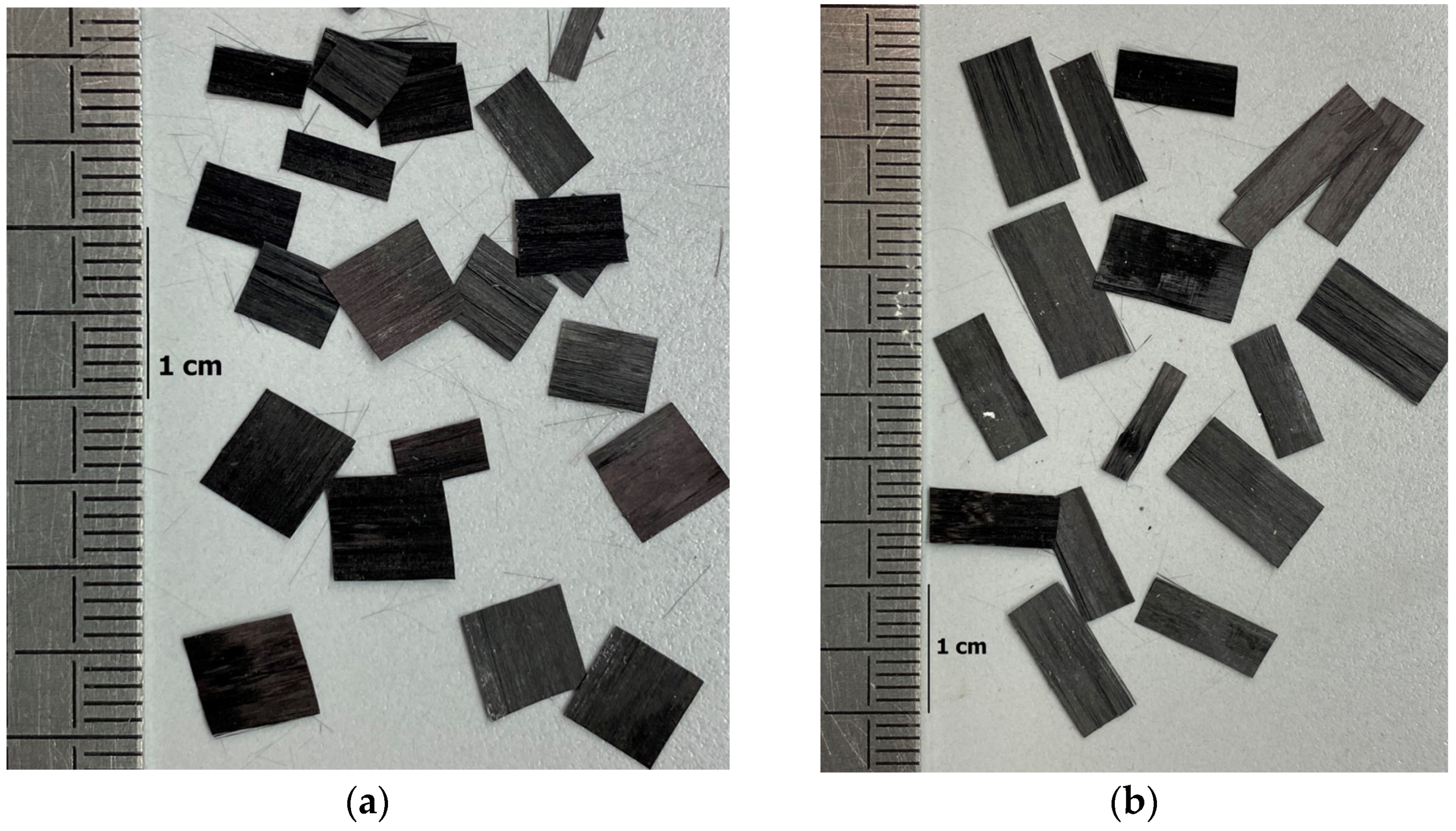

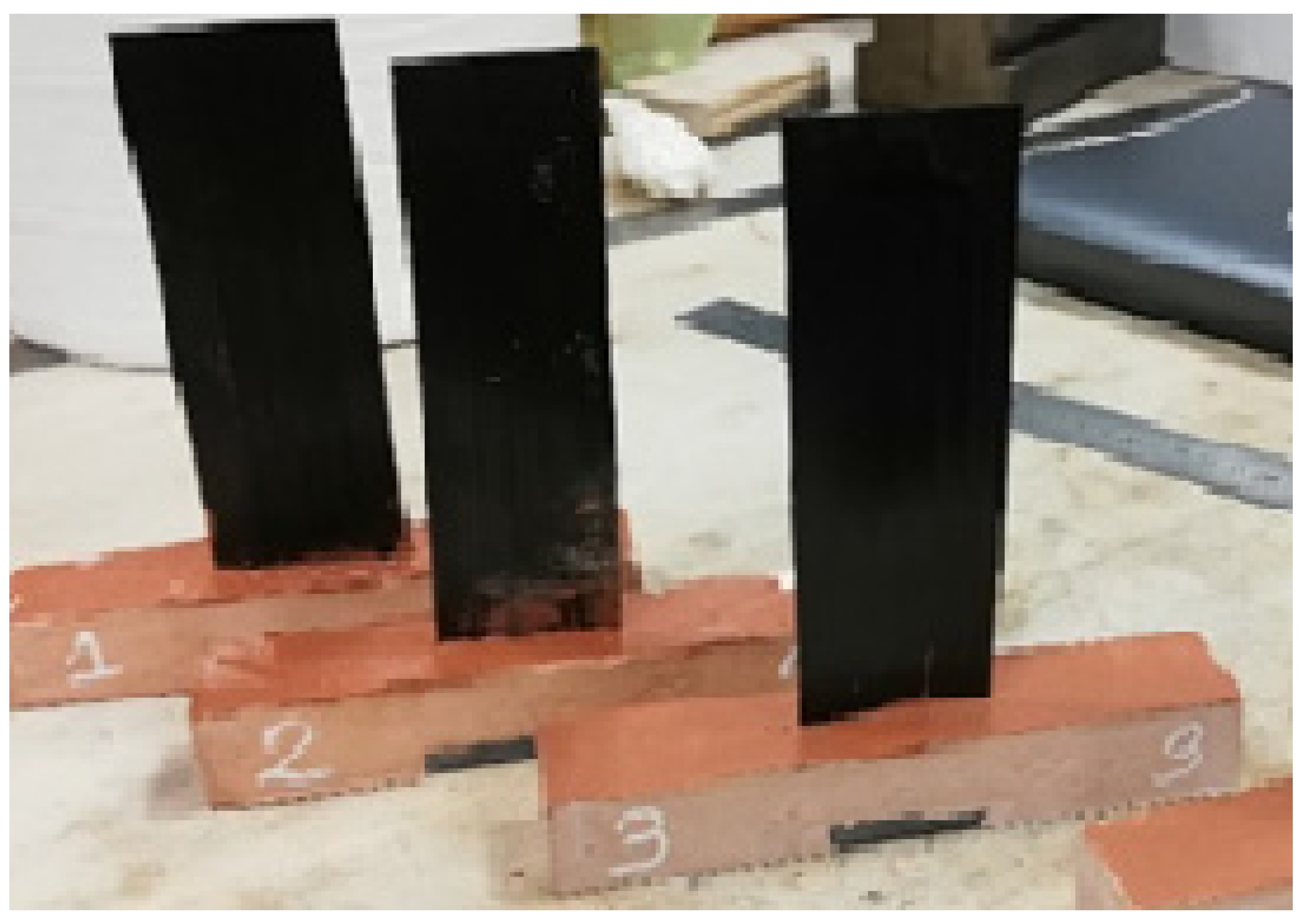

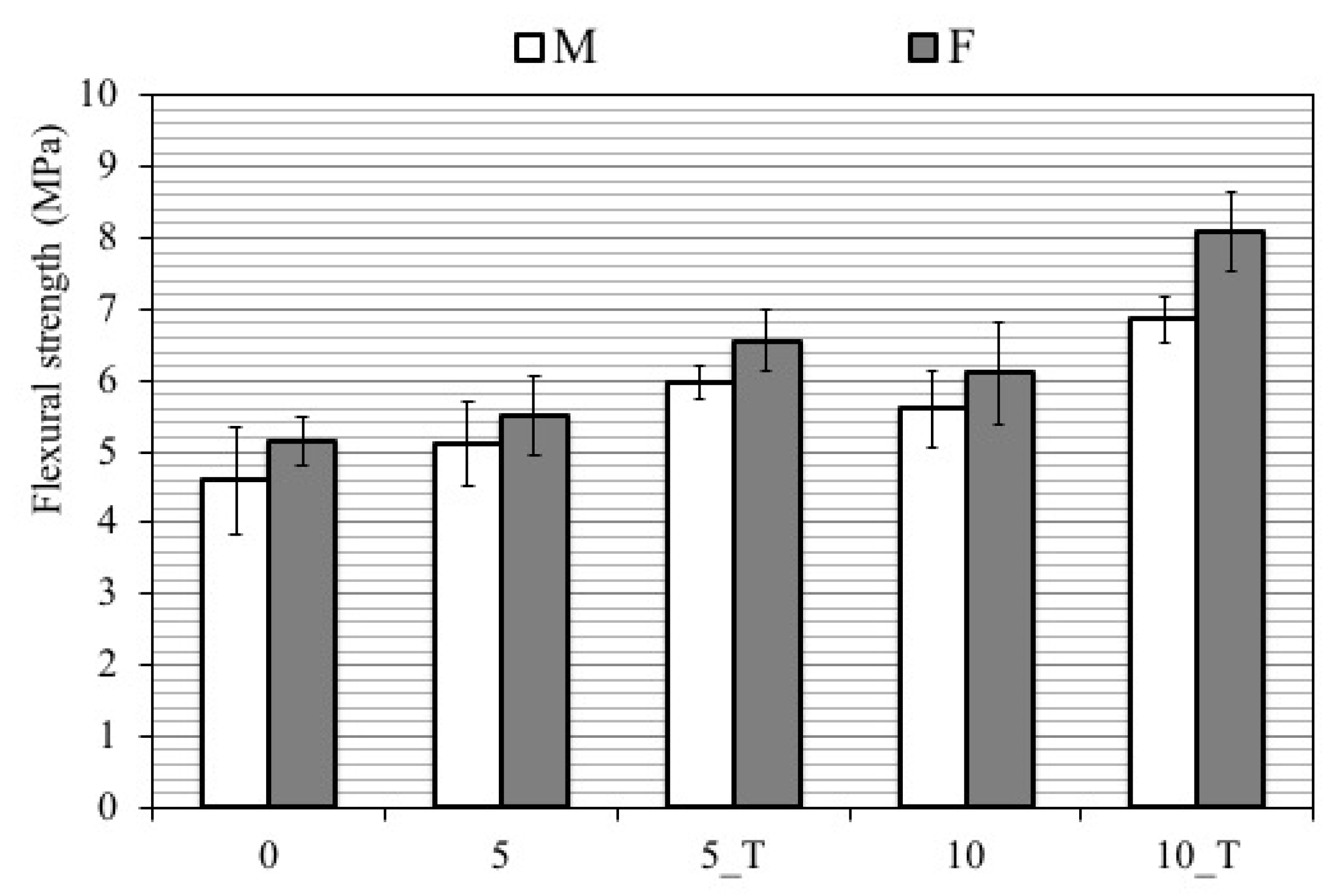

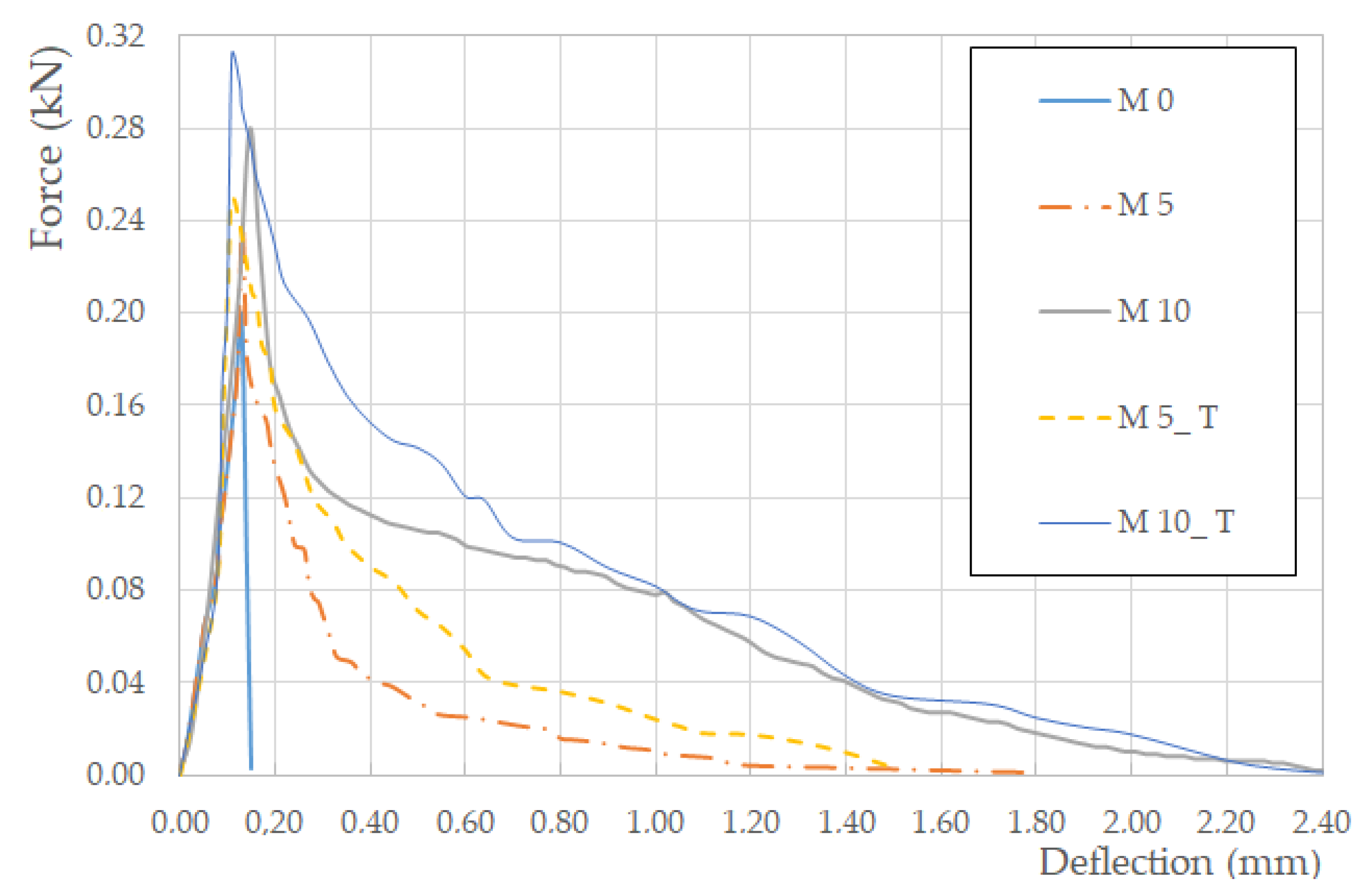
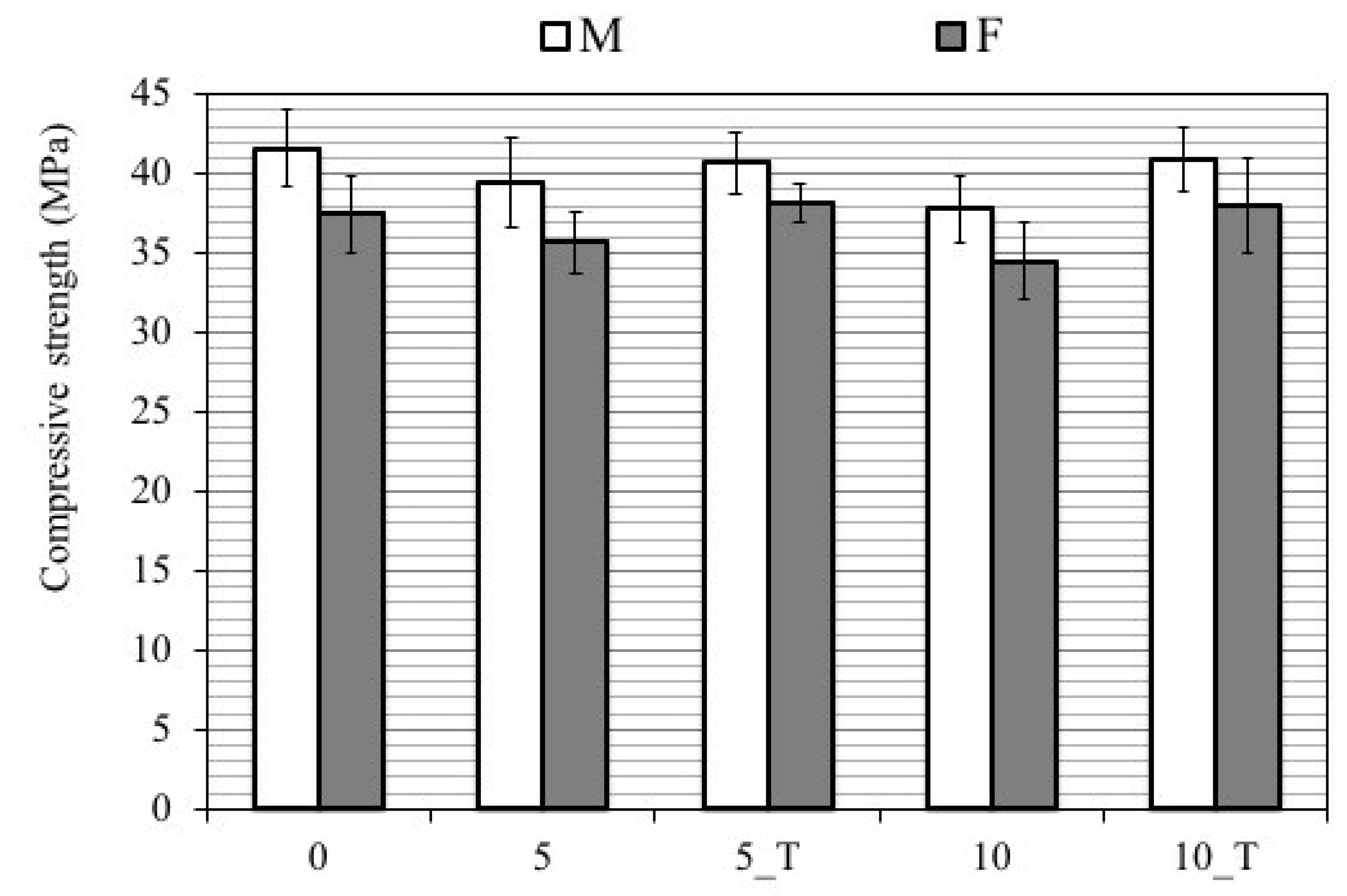
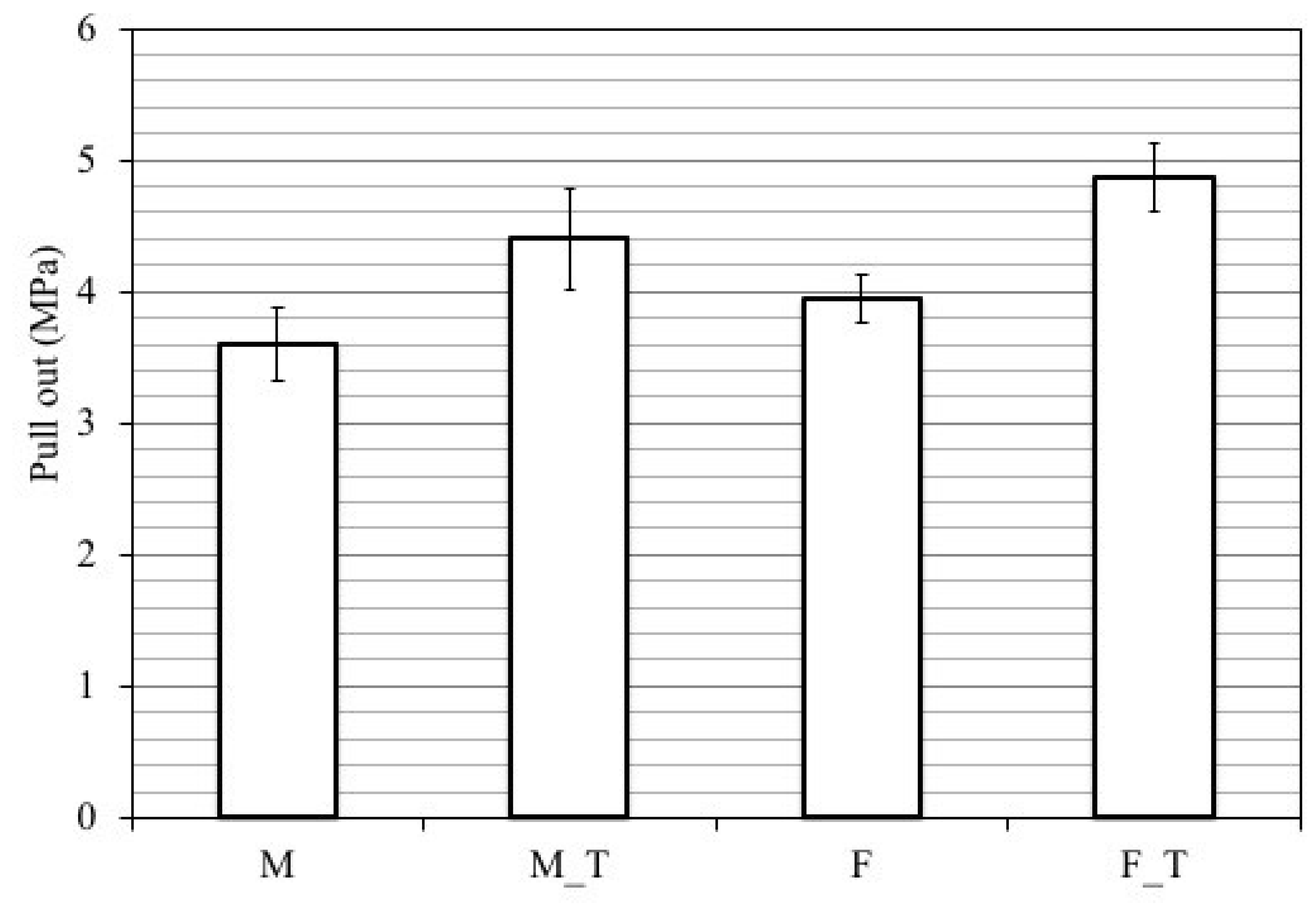
| Sample | Metakaolin | Fly Ash | Na2SiO3 | NaOH | Water | Sand | WS |
|---|---|---|---|---|---|---|---|
| M 0 | 100 | 0 | 30 | 30 | 10 | 100 | 0 |
| M 5 1 | 100 | 0 | 30 | 30 | 10 | 100 | 10 |
| M 10 1 | 100 | 0 | 30 | 30 | 10 | 100 | 10 |
| F 0 | 0 | 100 | 38 | 8 | 7 | 100 | 0 |
| F 5 1 | 0 | 100 | 38 | 8 | 7 | 100 | 9 |
| F 10 1 | 0 | 100 | 38 | 8 | 7 | 100 | 9 |
Publisher’s Note: MDPI stays neutral with regard to jurisdictional claims in published maps and institutional affiliations. |
© 2021 by the authors. Licensee MDPI, Basel, Switzerland. This article is an open access article distributed under the terms and conditions of the Creative Commons Attribution (CC BY) license (https://creativecommons.org/licenses/by/4.0/).
Share and Cite
Saccani, A.; Manzi, S.; Totaro, G.; Lancellotti, I. Alkali-Activated Mortars Modified by Epoxy-Carbon Fiber Composites Wastes. Appl. Sci. 2021, 11, 6110. https://doi.org/10.3390/app11136110
Saccani A, Manzi S, Totaro G, Lancellotti I. Alkali-Activated Mortars Modified by Epoxy-Carbon Fiber Composites Wastes. Applied Sciences. 2021; 11(13):6110. https://doi.org/10.3390/app11136110
Chicago/Turabian StyleSaccani, Andrea, Stefania Manzi, Grazia Totaro, and Isabella Lancellotti. 2021. "Alkali-Activated Mortars Modified by Epoxy-Carbon Fiber Composites Wastes" Applied Sciences 11, no. 13: 6110. https://doi.org/10.3390/app11136110
APA StyleSaccani, A., Manzi, S., Totaro, G., & Lancellotti, I. (2021). Alkali-Activated Mortars Modified by Epoxy-Carbon Fiber Composites Wastes. Applied Sciences, 11(13), 6110. https://doi.org/10.3390/app11136110







